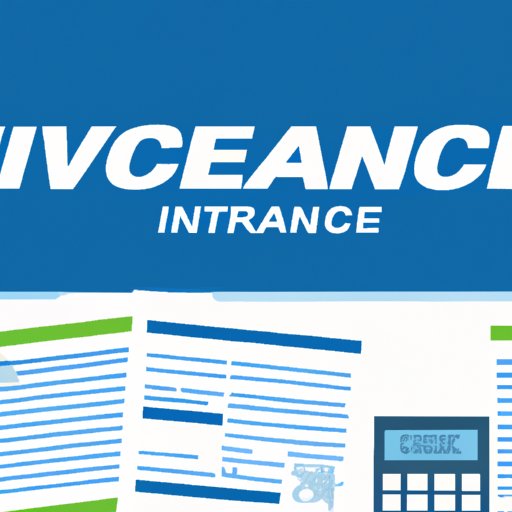Introduction
Invoice finance is a type of business finance that enables companies to unlock working capital from unpaid invoices. It helps businesses to manage their cash flow by using the invoices they have issued as collateral for a loan. In this article, we will explore what is invoice finance, how it works, its advantages and disadvantages, and how to choose the right invoice finance provider.

Explaining Invoice Finance: A Comprehensive Guide
What is Invoice Finance and How Does it Work?
Invoice finance is a type of financial arrangement between a lender and a borrower. The borrower submits an invoice to the lender, who then pays the borrower a percentage of the invoice’s value, typically within 24 hours. The lender then collects the full invoice amount from the debtor and returns the balance to the borrower minus fees. This arrangement can be beneficial for both parties as it helps the borrower access funds quickly and provides the lender with a secured form of lending.
Get to Know the Benefits of Invoice Finance
Invoice finance offers several advantages for businesses. According to a survey conducted by the National Association of Commercial Finance Brokers, 81% of businesses that use invoice finance reported improved cash flow, while 70% reported increased profits. Additionally, invoice finance helps businesses to reduce their reliance on traditional lenders such as banks, which may require more stringent criteria and lengthy approval processes.

Invoice Finance: An Overview of Its Advantages and Disadvantages
The Role of Invoice Finance in Managing Cash Flow
Invoice finance can play an important role in helping businesses to manage their cash flow. By providing access to funds quickly and without the need for additional borrowing, invoice finance can help businesses to pay for essential expenses such as staff wages or materials to keep operations running smoothly. Additionally, invoice finance can provide access to working capital to fund expansion and new projects.
Common Types of Invoice Finance for Businesses
There are two main types of invoice finance for businesses: factoring and invoice discounting. Factoring involves selling invoices to a lender in exchange for immediate payment. Invoice discounting, on the other hand, involves taking out a loan against the value of invoices. Both options enable businesses to access working capital quickly, but there are some key differences between them. Factoring is generally more expensive than invoice discounting, and it also requires the lender to manage the debt collection process.
How to Choose the Right Invoice Finance Provider
Considerations when Choosing an Invoice Finance Provider
When choosing an invoice finance provider, it is important to consider the terms and conditions of the agreement. It is also important to research the different fees and charges associated with each option and ensure that the costs are manageable for your business. Additionally, it is important to check the reputation of the provider and read reviews from other customers to ensure that you are getting the best deal.
Factors to Look For in an Invoice Finance Provider
When selecting an invoice finance provider, it is important to look for one that offers competitive rates and flexible repayment terms. Additionally, it is important to look for a provider that has a good track record and is experienced in dealing with businesses of your size and sector. Finally, it is important to choose a provider that offers comprehensive customer support and is willing to work with you to tailor a solution that meets your specific needs.
Conclusion
Invoice finance can be a useful tool for businesses looking to manage their cash flow and access working capital quickly. However, it is important to do your research and find a reputable invoice finance provider that offers competitive rates and flexible repayment terms. By understanding the advantages and disadvantages of invoice finance and considering the factors outlined above, businesses can make informed decisions about their financial future.
(Note: Is this article not meeting your expectations? Do you have knowledge or insights to share? Unlock new opportunities and expand your reach by joining our authors team. Click Registration to join us and share your expertise with our readers.)
